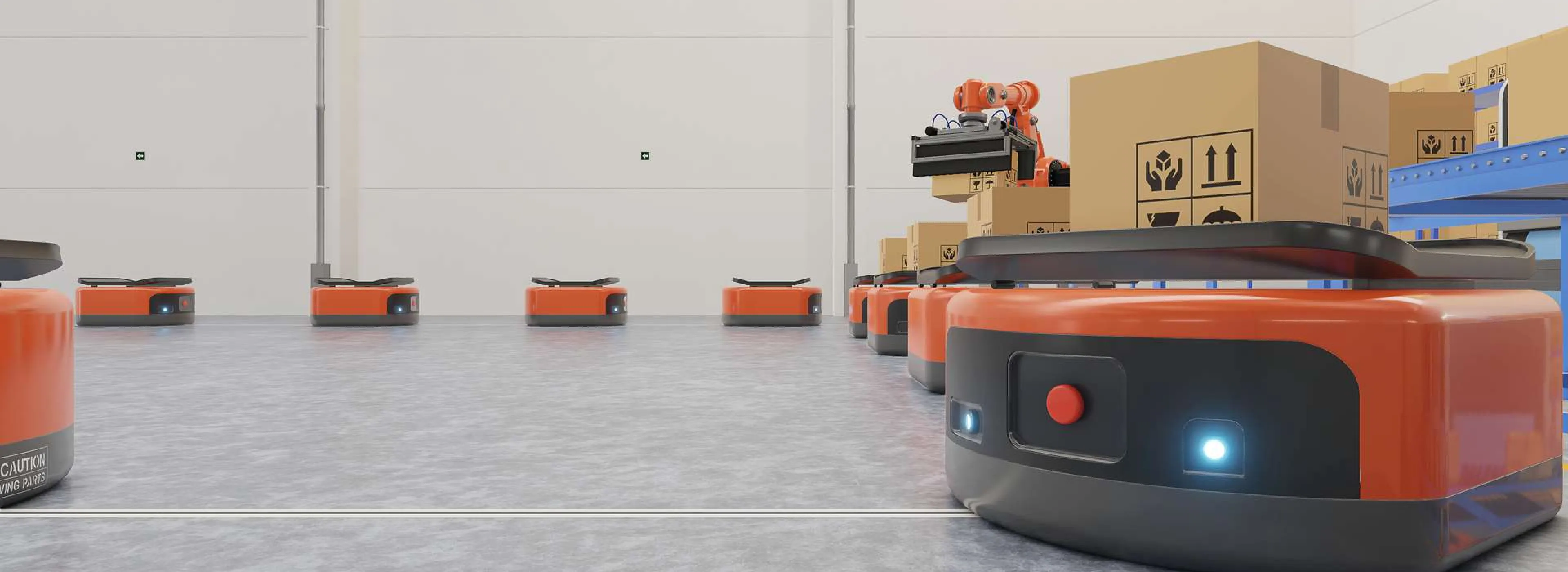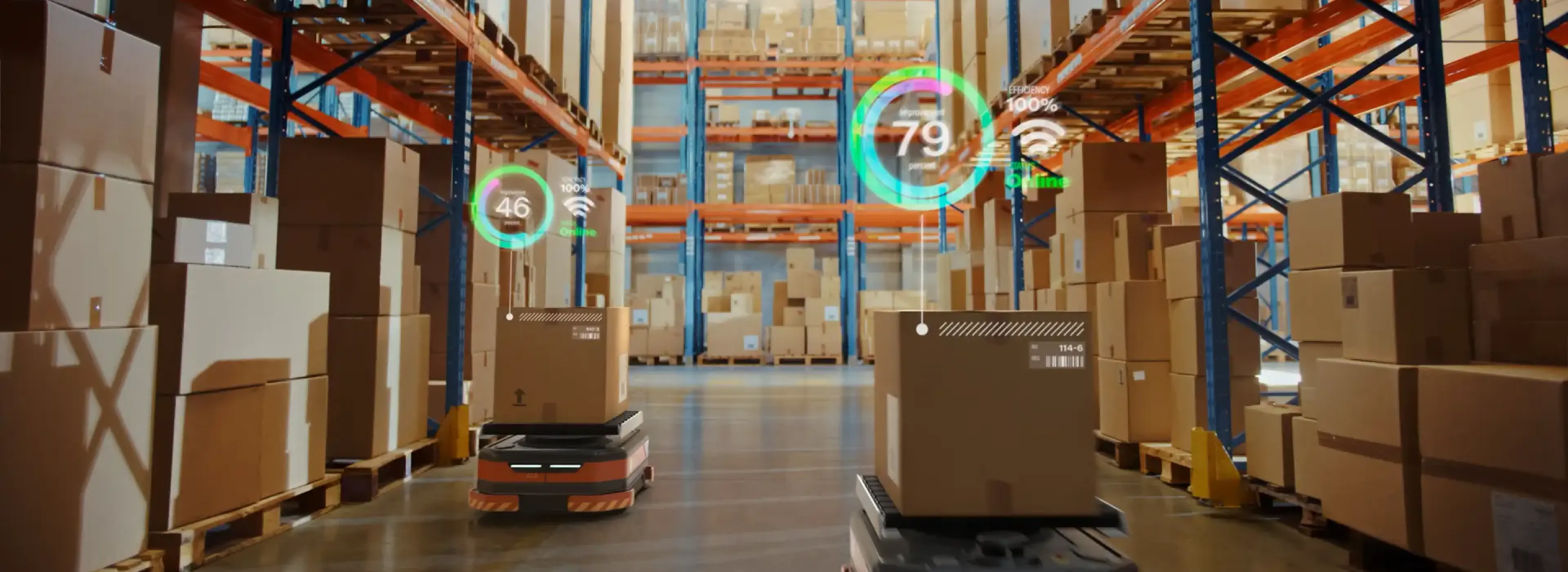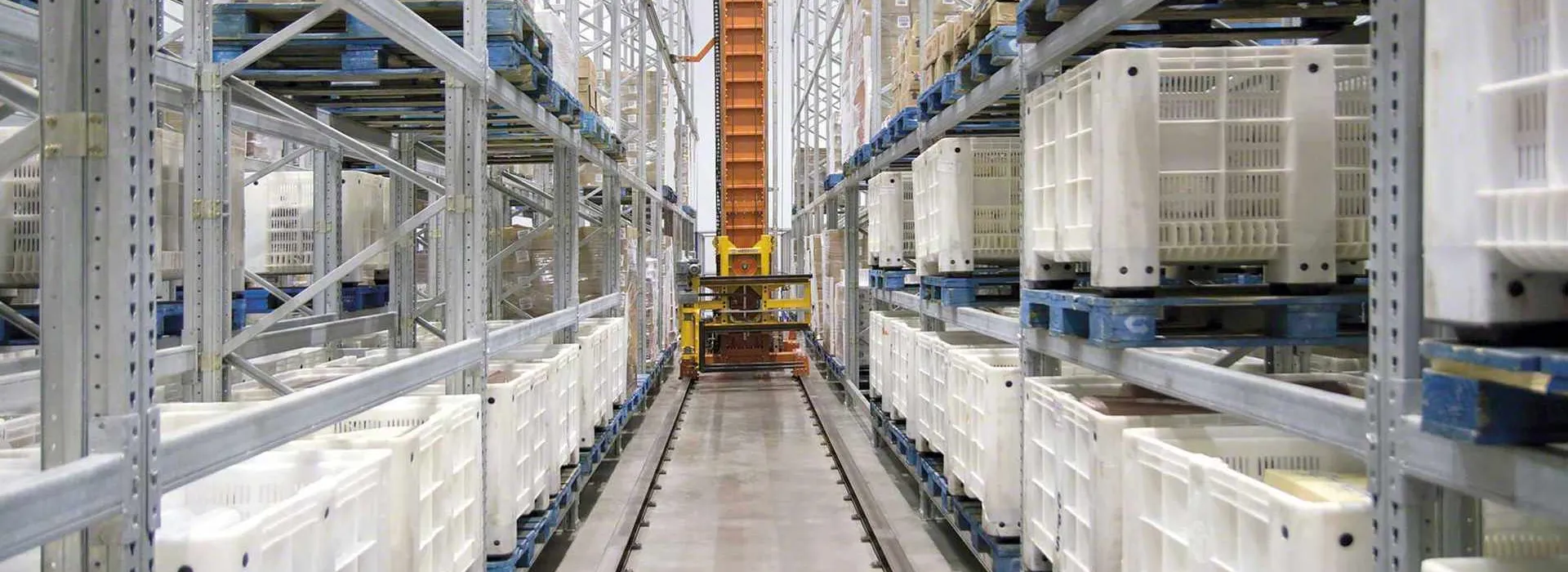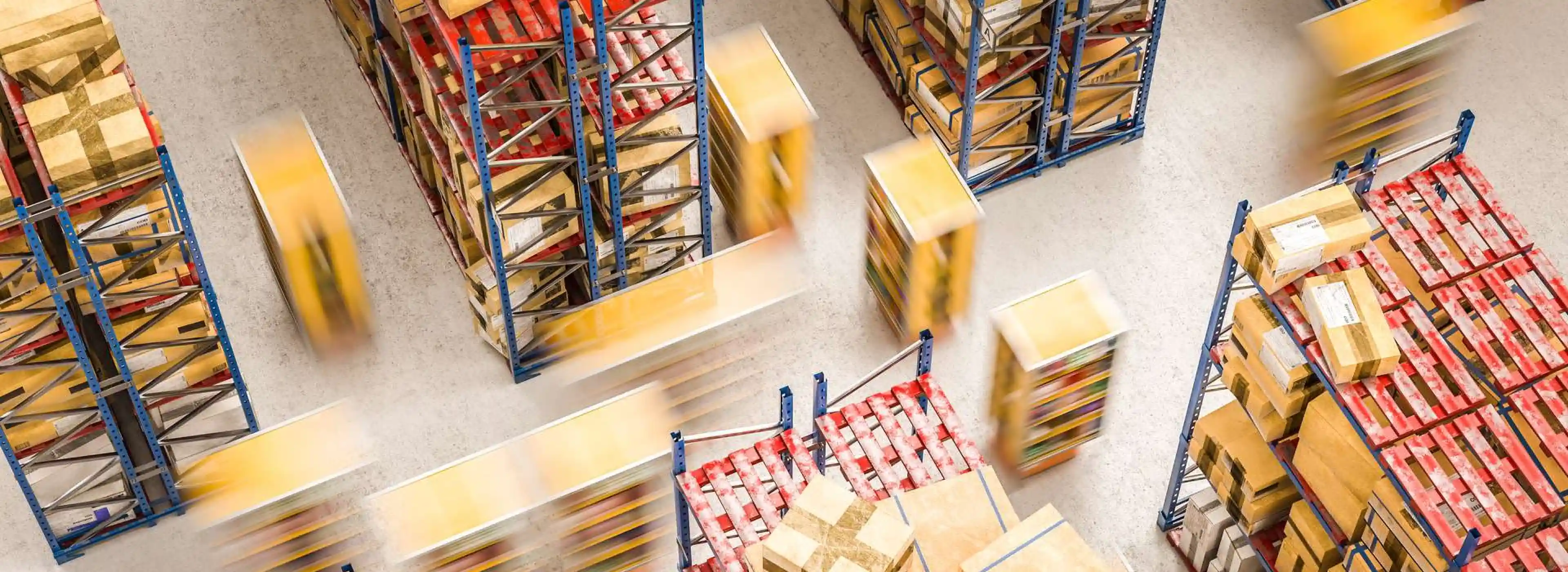If you want to learn about warehouse technology and optimizing warehouse processes, follow us on LinkedIn, YouTube, X, or Facebook. If you have other inquiries or suggestions, please contact us here. We’ll be happy to hear from you.
Amazon may be the king of warehouse automation with 45,000 Amazon (Kiva earlier) Automated Guided Vehicles (AGVs) in its warehouse army, but it is not the only company using autonomous vehicles in warehouse management. Today, beyond large-scale warehouses, even mid-sized businesses are moving gradually toward driverless vehicles.
Download Free Guide: 7 Technologies That Will Change the Warehouse
This blog post explores what driverless vehicles, or AGVs, mean for you as a warehouse/distribution center manager/owner, what their status in the industry is, and whether they have yet to become a viable option.
“The global market for AGVs is expected to grow at a CAGR of more than 15.8% from 2019 to 2025.”
What are AGVs or Driverless Vehicles?
An AGV, as the industry knows it, is a portable robot that navigates itself through floor markers (stickers), wires, magnets, lasers, or cameras. They’ve been around for over 40 years but in a rudimentary form.
Initially, these were used in manufacturing, but they have become very useful in warehouses and distribution centers. As warehouse vehicles, their job is to move materials around the facility.
The Value of Automated Vehicles in the Warehouse
The modern supply chain is witnessing warehouse automation in the form of various autonomous driving vehicles, such as automated stackers, forklifts, pallet trucks, and small rack-carrying robots like Kiva and Fetch.
They use machine learning and deep learning to program themselves onto their designated paths and related processes. These vehicles are proving to be the safest alternative to material handling by warehouse clerks (for labor-intensive and repetitive tasks).
UAVs such as drones have also started making appearances on the warehouse and logistics scene, but there are only prototypes as of now from giants such as Amazon.
MHI View suggests – As AGV technology evolves, even the smallest of warehouses and distribution centers can afford it.
There are four major advantages that auto-guided vehicles can add to the warehouse:
- Safety: These vehicles are the safest bet for material handling around the facility, saving warehouse clerks from performing tasks that can cause injury or physical exhaustion on top of product damage. They can use designated safe paths. Even if the path is highly used, the AGV sensor on the vehicle directs it to slow down or stop as it senses its proximity to objects or people.
- Flexibility: Autonomous vehicles can be integrated with warehouse management systems, Automated Storage and Retrieval Systems, conveyors, etc. Also, their mobility prevents them from being a permanent obstacle.
- Reduced Costs: You can reduce labor costs with autonomous vehicles in the warehouse. They can work 24/7 and on-demand, thus eliminating the need for training and exhaustion in the case of human workers. Also, while they provide a reliable speed, they require low maintenance.
- Increased Productivity and Precision: The ability to integrate with AS/RS, WMS, and sensor technology makes these vehicles accurate. They work at a consistent speed, thus making material handling time efficient, consistent, and less prone to errors.
Where are Driverless Vehicles Now?
Just like in our previous warehouse technology blogs that focus on technology adoption, here too, we assess automated warehouse vehicles on three essential frameworks – the S-Curve of Innovation, the Technology Adoption Life Cycle, and the Hype Cycle to find the present industry status of this technology.
The S-Curve of Innovation
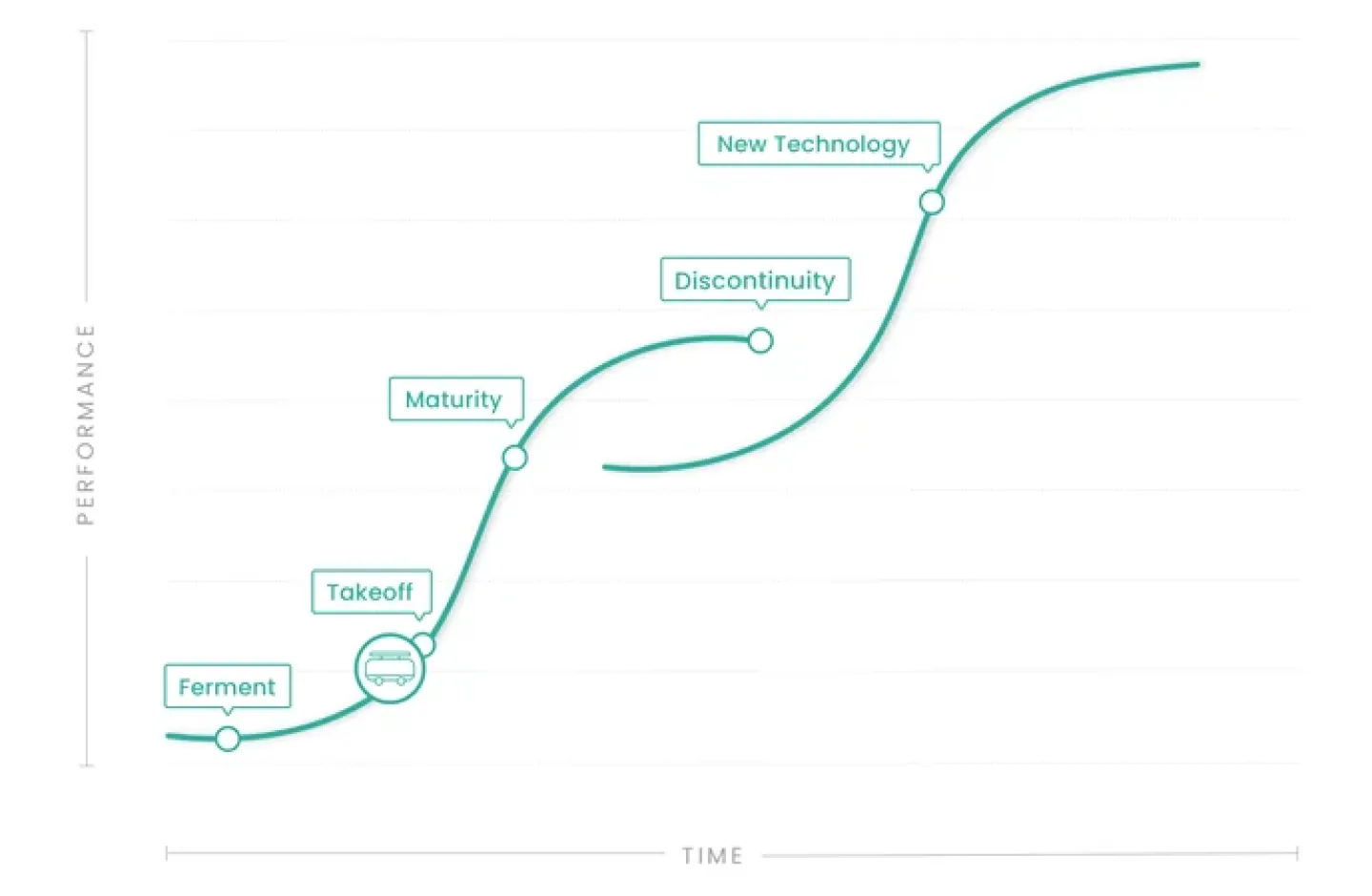
Automated guided vehicles are becoming integral parts of warehouses and distribution centers as they cross into the Takeoff Stage on the S-Curve of innovation diffusion. In recent years, top companies, such as Amazon, have adopted AGVs in their distribution centers to gain a competitive advantage. Growth and innovation are consistent, with expectation of more growth for a few years to come.
The Technology Adoption Life Cycle
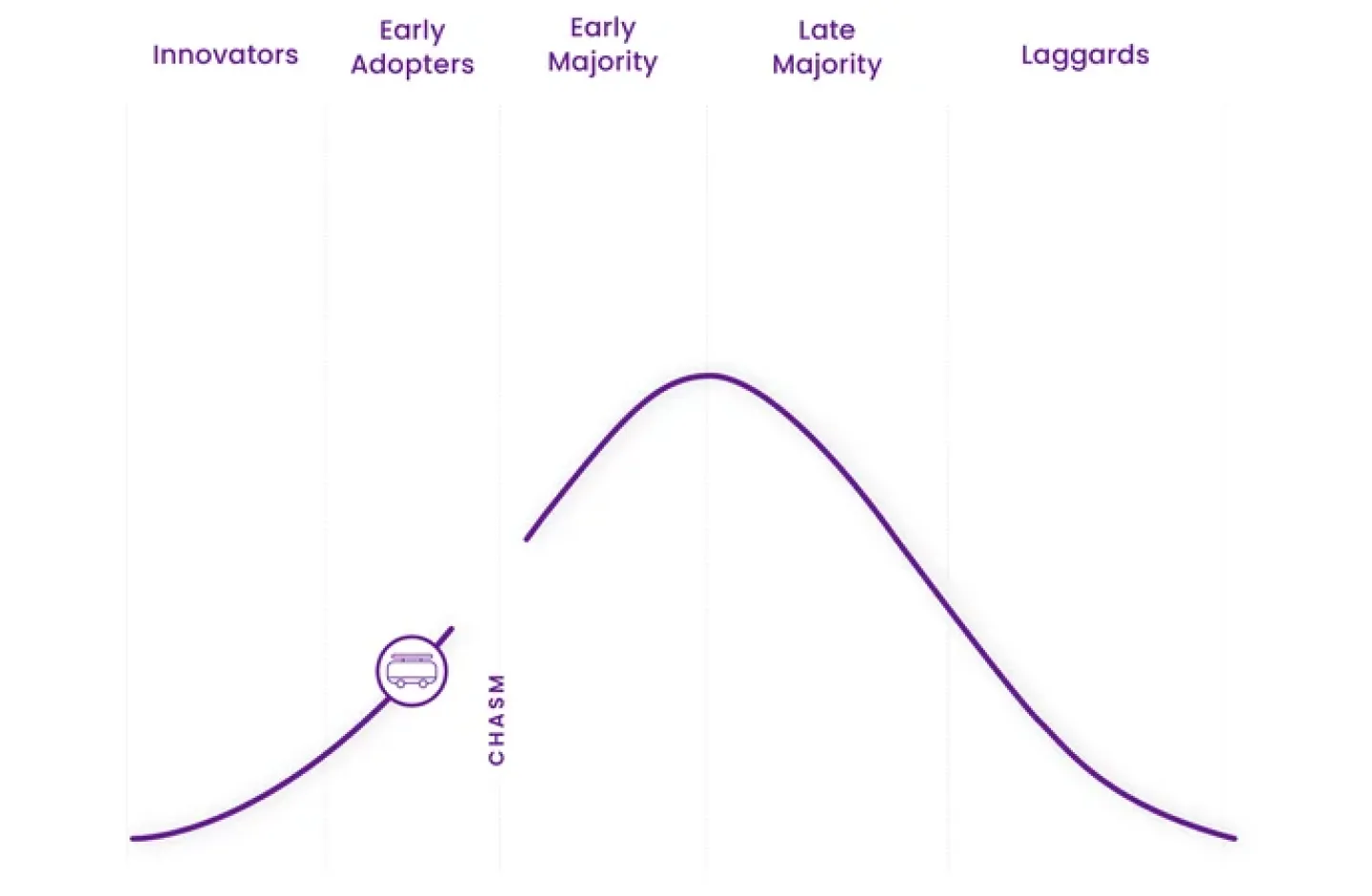
With an increasing number of warehouses and distribution centers adopting this technology, we believe that AGVs are being adopted by the Early Adopters. Industry challenges like labor shortages and increasing consumer demands could provide a push to the other side, leading to mass adoption in the future. Automated guided vehicle manufacturers such as Swisslog, Fetch Robotics, JBT, Savant, etc., are making constant innovations to add value to these enablers, making material handling more efficient, productive, and safe.
The Hype Cycle

Gartner depicts autonomous vehicles at the Peak of Inflated Expectations on the 2019 Hype Cycle for Supply Chain Execution Technologies. This means that technology is on the edge of falling through the Trough of Disillusionment, where flaws, failures, and real-world benefits are discovered.
Gartner also suggests that it is expected to reach the Plateau of Productivity in about 5-10 years, implying that you may still have some time to explore the viability of adopting autonomous vehicles in the warehouse.
If you are stepping up in embracing warehouse digitalization, auto-guided vehicles is a technology that can help you immensely. While the initial investment in autonomous vehicles may be too hefty, with constant innovation, the cost will become increasingly affordable for even small warehouses and distribution centers.
If you are considering investing, it’s a great time to start learning more about it before adopting it. We believe the best time to adopt the technology is in 3-5 years.
